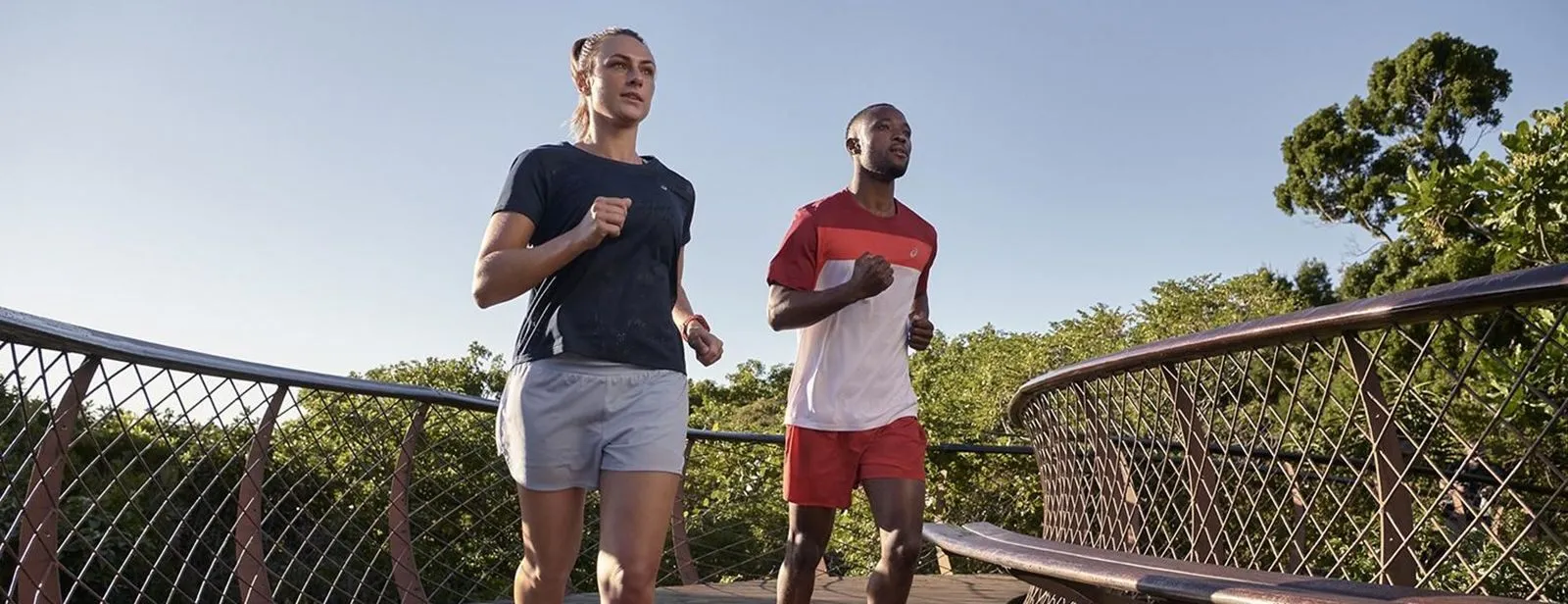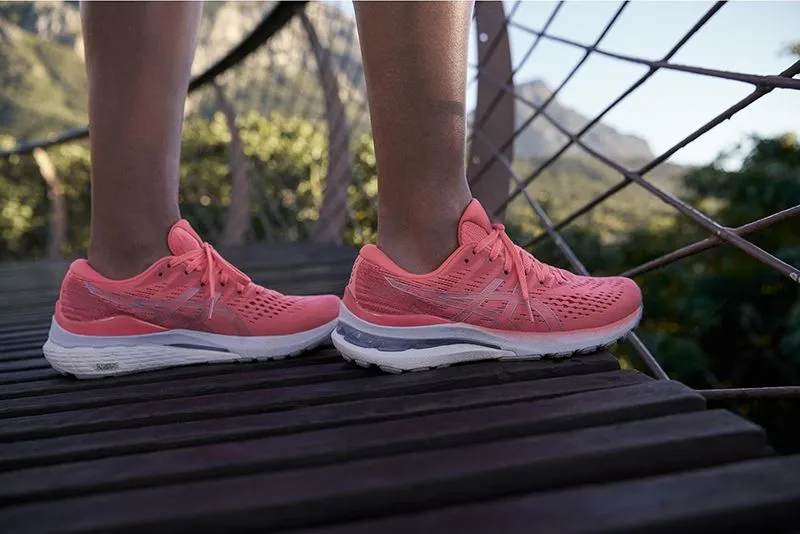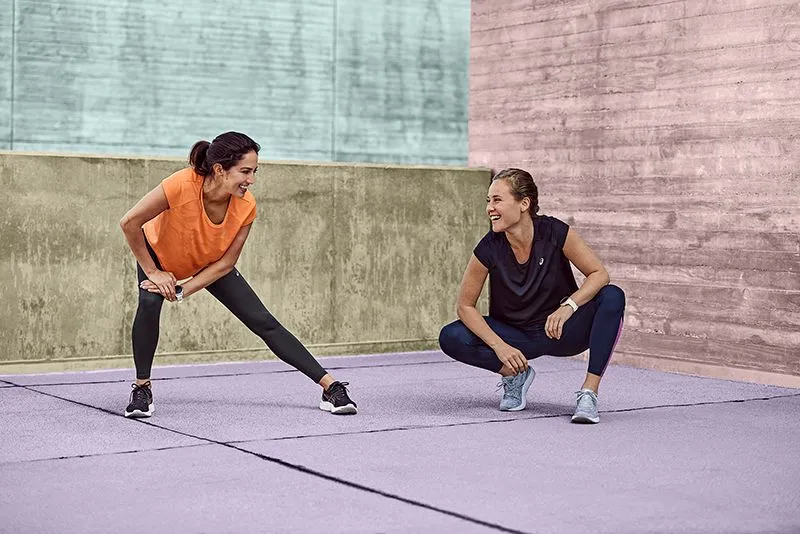
Protecting your knees | Knee protection for runners
July 16, 2021
The surfaces you run on and the shoes you wear can have an effect on the health of your knees. Here’s what you should know before you lace up and start jogging.
Long training sessions across hard surfaces, the pounding of your feet and excess stress on your knee joints; a common misconception is that running is bad for your knees, but studies show that this is not necessarily the case. There is evidence to suggest that running is actually good for your knees. Running strengthens the muscles around your knees and maintaining the correct posture and form when you’re running can actually help you to rehabilitate knee injuries .
In this guide, we’ll take a look at some of the most common types of knee pain and the steps runners can take to protect themselves.
The most common types of knee pain include:
- Runner’s knee – This is usually a pain located under the kneecap which can be aggravated by running. It is caused by the ligament in your knee that moves when running and can inflame your cartilage.
- Iliotibial band syndrome – This condition tends to affect long-distance runners. The pain comes from your iliotibial band, which is a thick band of tissue that begins in the pelvis and runs down the outside part of the thigh and crosses the knee. The pain is caused when the iliotibial band rubs against the outside of the knee joint.
- Patellar tendinitis – This generally stems from an injury to the tendon which connects your kneecap to the shinbone. With this condition, you’ll feel pain in the area between the bottom of your kneecap and the top of your shin.
- Osteoarthritis – Symptoms usually include swelling and stiffness in the knee and pain while running or even standing. It is the result of the wearing away of cartilage, the knee’s protective shield, which causes the bones in your knee to grind against one another.
While certain techniques can help to reduce the knee pain associated with these conditions, it’s also very important to visit your GP for a professional diagnosis and treatment.

Relieving pain and future-proofing yourself: Knee protection for running
Perhaps one of the reasons that running is sometimes associated with knee pain is the condition known as ‘runner’s knee’. This is a non-medical term that refers to several conditions that cause pain around the kneecap. While it’s true that runners can develop knee conditions, these conditions also affect non-runners in equal measure.
If you do suffer from pain around your knee, it can feel worse after running or even after walking up and down the stairs. It’s important to take measures to treat the condition and to protect yourself when doing exercise.
- Shorten your route – It’s not always easy to reduce the amount of running you do per session, particularly if you’re training for a specific challenge such as a 10K or a marathon. However, by running shorter distances, you’ll naturally reduce the level of impact on your joints. Once the pain has gone away, you can gradually increase the distance you cover.
- Apply ice – This is a well known protective tip for good reason. Knee pain in runners is often the result of inflammation around the knee joint and cartilage. By applying ice several times daily, you are directly treating the cause of the pain as well as numbing it at the same time. Wrap ice (or a bag of frozen peas) in a towel and hold it against your knee for 10 to 15 minutes, 3 or 4 times a day.
- Build up your muscles – This is beneficial for runners even if you don’t suffer from knee pain. By building up and strengthening your leg muscles, you’ll take a lot of the pressure off your knees. Building these muscles will also help to improve your running form, alignment and posture and make you less susceptible to similar injuries in the future.
- Foam rolling – Using a foam roller can be a great way to reduce soreness in your muscles, remove knots and help improve flexibility. A lot of the time, the pain you feel in your knees actually originates from other areas of your body, notably your hips, lower back and quad muscles. By using a foam roller on your quads and other areas daily, you can release tension, improve blood circulation and increase the range of motion in your muscles.
- Take a break – Sometimes you just need to let yourself heal. Concentrating on other ways of staying active such as swimming or strength training in the gym will give your knees the break they need.

Knee protection for runners
Another way to help to relieve the pain and support your knees during running is to use a knee brace. These braces are made from elasticated material that cover or wrap around the knee, supporting it without hindering your run.
Wearing a knee brace can:
- Reduce pain
- Provide support
- Help to correct any underlying issues that might have led to the knee pain in the first place
If you run a lot, a knee brace will help to minimise the impact of your sessions and give your knees that extra bit of support while they heal. However, you should consult a doctor before trying out any knee brace to ensure you’ve found the right brace for you.
Similarly, if you are suffering from knee pain and the tips and tricks we’ve mentioned above do not help, go and see a doctor. By continuing to run with a painful knee without identifying the underlying cause of the problem, you could make the situation worse.
If you need a little more guidance, then read our guides to two common running injuries, plantar fasciitis and shin splints .


